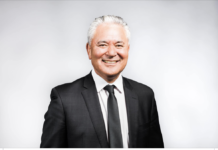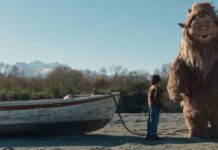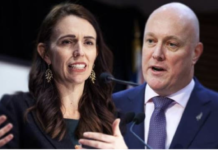 Announce protest actions, general chit chat or give your opinion on issues we haven’t covered for the day.
Announce protest actions, general chit chat or give your opinion on issues we haven’t covered for the day.
Moderation rules are more lenient for this section, but try and play nicely.
EDITORS NOTE: – By the way, here’s a list of shit that will get your comment dumped. Sexist language, homophobic language, racist language, anti-muslim hate, transphobic language, Chemtrails, 9/11 truthers, Qanon lunacy, climate deniers, anti-fluoride fanatics, anti-vaxxer lunatics, 5G conspiracy theories, the virus is a bioweapon, some weird bullshit about the UN taking over the world and ANYONE that links to fucking infowar.






With the PM off to the EU next week.
Robo’s in charge I guess. So. He should crack open the Treasury account that has $37b sitting in it and set that baby free!
He could build some houses! He could legislate a UBI or he could throw a party!
He’s got 2 week while the boss is out of the country. What should he do?
So the 6 councillors on the Tupuna Maunga Authority in Auckland have turned into ‘rubber-stampers’, House ‘Servants’. Or are not allowed to speak as they have been bullied into saying nothing by the mowrees??
So far the legal cost to the Auckland Ratepayers is more than $870,000 dollars! All because the TMA operations manager, N Turoa didn’t do his job properly.
Then his boss tried to cover this up by threatening legal action. Goes to court and loses. Now he’s planning on going to the Supreme Court to change the Reservation Act!
Sore loser!
Ōwairaka / Mt Albert Tree Protection Occupation
Fact, fiction and spin – what can you believe?
We are a community group who came together to fight something we truly believe is wrong – the destruction of 345 healthy, mature exotic trees on Ōwairaka / Mt Albert. In all, the ratepayer-funded Tūpuna Maunga Authority plans to destroy around 2500 exotic trees from Auckland volcanic cones (maunga).
Since our formation, in November 2019 the Authority has conducted a smear campaign against us, which is full of half-truths and outright lies. Unfortunately, many journalists and news media outlets have taken the Authority at face value and not even bothered to check the facts.
Here are the truths on this issue.
The truth about who owns the maunga lands
The truth about public consultation around the exotic tree felling
The truth about our occupation of the maunga and public opinions of it
The truth about the TMA’s justification for removing all exotic trees at once
The truth about expert advice and support
The truth about our views about the Treaty / Treaty Settlements
The truth about the hui at Ōwairaka
An expert opinion on the relationship between the Tūpuna Maunga Authority and; Auckland Council and; Nga mana whenua o Tamaki makaurau and; The other people of Auckland
The truth about who owns the maunga lands
Fiction: Tupuna Maunga Authority owns the maunga lands
Fact: A Treaty settlement (Collective Redress Act 2014) vested ownership of 13 maunga in a collective of 13 iwi and hapu (“Nga Mana Whenua. The land is held on trust for Nga Mana Whenua and “the other people of Auckland”.
“The other people” includes Tangata whenua who were excluded from that settlement.
The Reserves Act (1977) sits above the Collective Redress Act. This means all maunga are public reserves. Public access is guaranteed and the lands cannot be sold or developed for housing.
The ratepayer-funded Tupuna Maunga Authority was established as a co-governance organisation to administer those maunga lands. It also administers Mangere, North Head and Mt Smart (which are either Crown or Auckland Council owned). It has 12 members – 6 iwi representatives and 6 Auckland Council representatives.
In questioning the Authority’s processes, we are questioning its Auckland Council representatives as much as anyone. For more information, see this opinion written by Chris Finlayson (the Minister who originally oversaw the Collective Redress Act Treaty settlement).
The truth about public consultation around the exotic tree felling
Fiction: Tūpuna Maunga Authority consulted with the Mt Albert community over its intention to remove 345 trees.
Fact: The Authority consulted with the public over the Integrated Management Plan for its ‘big picture’ vision. However, the very vague wording in this plan and the annual operational plans does not make it clear that the underlying intention is to destroy all exotic trees on all maunga. There has never been any public consultation over specific plans to remove all exotic trees from Ōwairaka / Mt Albert” and other maunga.
Furthermore, there is no evidence that the 12 Authority’s iwi and Auckland Council representatives ever voted to fell all exotic trees on Auckland’s maunga. That decision was made by an Authority staff member in consultation with the Chairperson.
Spin: The Tūpuna Maunga Integrated Management Plan underwent three rounds of public consultation in 2016, with in-person hearings, and the Tūpuna Maunga Authority Integrated Management Plan Strategies underwent public consultation in 2019.
Fact: While it is true that these ‘consultations’ were held, many participants have told us that they found the entire process manipulative and abusive. Several others told us that their submissions mysteriously disappeared and never went on record.
Read this article for more information about a formal complaint laid against Councillor and TMA representative Josephine Bartley, following one of the TMA’s public consultation sessions.
In any case, the Authority never made it clear that it intended to get rid of around 2500 exotic trees from Auckland’s maunga, as shown in this video…
The truth about our occupation of the maunga and public opinions of it
Fiction: We have blocked public and council access to Mt Albert / Ōwairaka / Intimidated people, etc.
Fact: We only block access to Treescape and anyone involved in felling trees. Everyone else is free to come and go as they please.
The vast majority of us have never been involved in an occupation or anything close to it. In the early days of we were understandably out of our depth, nervous and jumpy. This led to some mis-understandings, that resulted in some maintenance and security people being denied access to the maunga. Those misunderstandings were quickly cleared up and we have not impeded their access since.
The truth about the TMA’s justification for removing all exotic trees at once
Fiction: We totally oppose the Authority’s restoration programme / We are preventing the Authority from planting native species
Fact: We have always supported the Authority’s long-term native vegetation vision but question the environmentally destructive process being used to achieve that vision. Best practice succession takes many decades, not months!
Furthermore, our people have taken part in the Authority’s community planting days at Ōwairaka.
Fiction: Ecologists and experts in the field of landscape revegetation believe the replacement of 345 exotic trees with natives far outweighs the short-term impact
Fact: We support the Authority’s long-term vision of revegetating Mt Albert / Ōwairaka in native trees. However, we are deeply concrned about the negative environmental impact of removing so many mature healthy trees at once.
Honour the Maunga’s leader Anna Radford helping out at the Authority’s 2020 community planting day at Ōwairaka.
Honour the Maunga’s leader Anna Radford helping out at the Authority’s 2020 community planting day at Ōwairaka.
Many experts in the field have privately told us they are concerned about the TMA’s proposed approach. However, they are unwilling to speak out publicly because it could lead to them losing work or business. However a leading parks and environment expert, Kit Howden, is so concerned at the situation that he agreed to be videoed expressing his concerns. See here for a 1 minute excerpt from his interview, and here for the full 15 minute discussion.
Interestingly, Auckland Council’s native forest restoration guide contradicts the TMA’s proposed approach at Mt Albert / Ōwairaka.
Fiction: Most of the trees on Mt Albert/Ōwairaka are ‘pests’.
Fact: The vast majority of exotic trees on Mt Albert are neither invasive nor causing any harm to people or plants. In fact, only 7 of the 345 trees are defined as pests in the Regional Pest Management Strategy.
We have no objection to invasive trees such as a small number of privets being removed. However, we do object to hundreds of healthy, mature, climate managing trees that are habitat to significant biodiversity being felled. Especially when the TMA dishonestly told to the Commissioner they would not destroy the trees in bird breeding season and that is exactly what they are proposing to do.
Spin: The 345 trees will be replaced by 13,000 new plantings
Fact: Let’s understand what those 13,00 new plantings will really be like. Based on the Te Ngahere planting plan dated 16 October 2018…
4130 are of monocots (sedges, grasses, flax, etc.) and ferns of mostly small growth form. They will never serve as replacement for mature trees.
Allowing the shrub plantings like Pōhuehue (2700 of them) to be counted as trees, there will be around 8000 trees and shrubs planted out in 1 – 2 litre pots.
Let’s (generously) assume the entire pot weight of around 1kg represents the weight of the plant. This will result in a planting of about 8000 kg of stems.
It is conservatively estimated that the trees to be removed will be an average of 25cm diameter at breast height, and will weigh around 400kg on average if branches and leaves are included. That totals about 138,000kgs for 345 trees.
By our conservative calculations, the proposed native plantings will be at the very best less than 6 per cent of the mass of the trees that will be removed.
Less conservative calculations could put this closer to 1%
We are in the midst of a climate change emergency, so that’s a lot of carbon sequestration to take away, never to be fully replaced again on this planting plan.
What’s more, you cannot replace a 100 year old tree with a sapling. In order to actually replace the loss of the very valuable services being provided to the community by the exotic trees, some are 100 years old, the Authority would have to plant thousands of young trees.
Spin: A number of the trees pose a significant health and safety risk (TMA communications often include a photo of a large fallen tree)
Fact: The TMA has neglected to point out that the tree fell as a result of the massive storm that hit Auckland in April 2018. 140 kmph winds resulted in hundreds of trees being blown down all over the Auckland region. Given how exposed Mt Albert/Ōwairaka is, it is testament to the trees’ health and vitality that very few were blown over.
The Health and Safety excuse is being used across Auckland to justify the destruction of Auckland’s urban forest. Furthermore, there has not been any formal health and safety risk assessment in relation to Ōwairaka’s trees.
Spin: The resource consent prohibits the removal of exotic trees that contains nesting native birds.
Fact: The felling is timed for the bird-nesting season. Be aware that nesting introduced bird species (e.g. thrush, sparrow, etc.) are not protected and will therefore die in the felling process.
Spin: The exotics are blocking the viewshafts to the summits (tihi).
Fact: Native trees are blocking the viewshafts, too, yet they are not being removed. For example, pohutukawa are obscuring Ōwairaka’s summit. Note: we will be there to save them if the chainsaws should ever come out!
Native birds may be theoretically protected but many (e.g. morepork) created nests in holes and cavities high up in trees. A visual inspection from the ground could not possibly spot those nests.
The Authority also fails to point out that nesting native birds will be surrounded by five weeks of chain-sawing, helicopter activity and extensive human activity and interruption. Such a highly stressful environment is likely to discourage birds from nesting and/or raising their chicks.
The truth about expert advice and support
Fact: The Tree Council has publicly stated its 100% support for the Authority’s restoration programme at Ōwairaka / Mt Albert.
Fact: According to the Tree Council’s website, it exists to…”protect, conserve and improve the tree cover in the Auckland region, especially in urban areas.”
The Tree Council’s website also states: “Trees have a unique place in our environment. Without them, human life as we know it would not exist. Trees conserve water, make our air breathable, absorb air pollution, support our slopes and form the hub of enormous underground micro-environments that strengthen soil and foster insect life.”
Given its mandate, we find very odd that the Tree Council’s support for felling thousands of trees on Mt Albert/Ōwairaka and across Auckland’s volcanic cones. This support is even odder when viewed in the context of a climate change emergency.
The Tree Council’s spokesperson has admitted publicly that they are supporting Tupuna Maunga Authority for cultural, not ecological reasons.
The truth about our views about the Treaty / Treaty Settlements
Fiction: Honour The Maunga is part of Don Brash’s One Treaty, One Nation group / is linked to Hobson’s Pledge, etc.
Fact: We are not part of these groups and do not in any way support them. We do not have any issue with any Treaty settlements and are simply here to save the trees!
Fiction: The name ‘Honour The Maunga’ is a cynical play on ‘Honour The Treaty’
Fact: The name “Honour The Maunga” is 100% about honouring the trees and lifeforms we want to save and, through them, the flow of life into the earth (i.e. the maunga).
We feel this name conveys our deep respect for the maunga and its lifeforms and can categorically state it has absolutely nothing to do with the Treaty (our sole focus is an environmental one) or any play on anything the Authority has ever said.
The truth about why we did not attend the Authority’s November 2019 hui at Ōwairaka
Spin: The Authority’s hui to be held at Ōwairaka / Mt Albert provides a genuine opportunity for people to speak
Fact: For three weeks before the hui, we had been trying to get the Authority to attend a public meeting so the community’s questions could be answsered. We had a public meeting arranged, including a respected QC as a Chair.
The Authority refused to attend this meeting and instead called a hui on a completely different date, and without advising us of it. The first we knew about it was when journalists started phoning for comment.
After consulting with several Maori supporters, we decided not attend. This was for several reasons, including because did not provide an opportunity for people to ask questions even though this was the very thing we had been asking the Authority for. To date the Authority has never agreed to attend a public meeting and answer people’s questions. We wonder why this is.
An expert opinion on the relationship between
Tūpuna maunga authority and;
Auckland council and;
Nga mana whenua o tamaki makaurau and;
The other people of Auckland
Honour The Maunga’s sole focus is an environmental one, which centres on our concerns around unnecessarily removing hundreds of mature, healthy trees from Ōwairaka / Mt Albert all at once.
The occupation group on the mountain is the tip of a very large iceberg and we have received support from many people – Maori and non-Maori alike. Just because someone isn’t in a photo, does not mean they don’t support our action.
We have been dismayed to see Tūpuna Maunga Authority and (weirdly) the Tree Council stirring up racial division by positioning us as culturally insensitive / culturally ignorant.
We do NOT feel it is appropriate for our group to be drawn into discussion about treaty-related matters, so we asked the opinion of Chris Finlayson, QC. He is a former Member of Parliament and Cabinet minister who, for a time, was Minister for Treaty of Waitangi Negotiations.
Here is his unabridged response:
Maunga Authority
1 Thank you for calling me yesterday about the recent actions of the Maunga Authority which seem to be concerning some members of the community. I said I would look at the Nga Mana Whenua o Tamaki Makarau Collective Redress Act 2014 (“the Act”) and send you a brief memorandum on my views. I give these views as a former Minister. This isn’t legal advice.
2 At all relevant times I was both the Ministry of Treaty of Waitangi Negotiations and the Minister for Arts, Culture and Heritage. I mention the Arts portfolio as my Ministry was pursuing the idea of applying for UNESCO World Heritage status for Tamaki’s volcanic cones because of their uniqueness in an urban landscape and their beauty. I do not know the current status of this project, or whether it is still being considered. I hope so.
3 As Ministry for Treaty of Waitangi Negotiations between 2008–2017, I was very busy in Tamaki. During this period a number of settlements were achieved, including the Collective Settlement which was given effect to by the Act. An important aspect of the Act was to recognise the importance of the maunga to local iwi and give them an opportunity to have a say in their governance and remediation. I was determined to avoid the mistakes of 2006 when a previous government was criticised for the way it had proposed redress for certain maunga in an agreement it initiated with Ngati Whatua o Orakei. The maunga needed to be part of a collective settlement involving all Tamaki iwi (see the preamble to the Act and section 3 which sets out the Act’s purpose).
4 As an aside, during negotiations it became apparent that there were unregistered easements over the maunga, particularly related to what is now Watercare Services facilities. As a result of the settlement, all these matters were tidied up (see Schedule 1 of the Act).
5 It was understood by the Crown that the maunga were not in a good condition. One has only to drive past Maungawhau (Mt Eden) to see, for example, old pine trees probably planted in the 1930’s, and also wilding pines. There are a mixture of native trees and exotics on most of the maunga. It was anticipated that restoration work would take many years and that it would also be expensive. It was always my hope that in due course the maunga would be restored to their original state and, as I said earlier, receive UNESCO recognition. I for one never thought that this project could be achieved in a decade – I always saw it as a project that would take fifty years. (That having been said, I had a similar view of Wellington’s Tinakori Hills after thousands of damaged pine trees were removed in the early 2000s. The native regeneration has been spectacular and has transformed the backdrop to Thorndon and the CBD, though much more needs to be done. These are intergenerational projects).
6 Part 3 of the Act established the Tūpuna Maunga o Tamaki Makaurau Authority. The membership (see section 107) reflects the fact that this is to be a co-governance arrangement with the Auckland Council. (I am not sure whether there is still a non-voting member appointed by the Minister of Arts, Culture and Heritage).
7 Note section 109 which sets out the Authority’s functions and powers. The Authority must have regard to “the spiritual, ancestral, cultural, customary, and historical significance of the maunga to Nga Mana Whenua o Tamaki Makaurau” and also section 41(2) which is very important. It provides that the maunga are held “for the common benefit of Nga Mana Whenua o Tamaki Makaurau and the other people of Auckland”. This phase was inserted to emphasise the legitimate ongoing interest of the broader community. It was accepted that the community generally loved the maunga and no-one had a monopoly on care for the maunga. Sensitivity to the broader community’s aspirations is relevant. This important principle was emphasised by me in the third reading on 23 July 2014 (see Hansard at p.19495). So too Kelvin Davis, now Minister for the Crown/Maori Relationship (Hansard at p.19948).
8 I refer you to the following sections which highlight the essential involvement of the Auckland Council:
(a) Section 60 provides that each financial year, the Authority and the Council must agree an annual operational plan. Note subsection (4) which sets out the kinds of matters that need to be addressed, including restoration work and strategic projects;
(b) The Auckland Council is responsible for routine management and costs (sections 61 and 62);
(c) Each year, the Council must meet with Tamaki iwi to discuss matters related to the maunga, including:
(i) The performance of the Maunga Authority during the year; and
(ii) The proposed activities of the Maunga Authority in the following year (section 64).
As can be seen, the Council is not some nodding automaton. It needs to engage with the Authority on both current and future activities. It must have its say bearing in mind that the maunga are held for the common benefit of Manawhenua and the other people of Auckland. That is why I would expect the Council to have a view about, for example, removing crosses from Mount Roskill, removal of trees from Mount Albert and arrangements for the Pakuranga Tennis Club at Ohuiarangi/Pigeon Mountain. I would also have thought that the Council would be keen to consult with the Auckland community about their hopes for the maunga.
9 As I have said all along – the law can set things out but success will only be achieved if: first, the Authority works with the local community. I understand that the Authority has actually consulted with the public on its plan but I am unaware of the detail. As you doubtless know, consultation does not always mean both sides end up agreeing. The Authority, having consulted, may reach a different conclusion to some community groups. Secondly, if the community recognises that times have changed and that the views of Manawhenua, so unfairly ignored for so long, are very important. Change is coming for the maunga. Depending on how it is dealt with, that change will either be a source of division and rancour or something exciting in which all can share. Generosity of spirit is required on all sides.
NZ is at war with Russia!! FFS!!
Deploying Cannon fodder! I means troops and weapons.
Here. https://www.beehive.govt.nz/release/new-zealand-sends-c130-hercules-and-50-strong-team-europe-support-ukraine